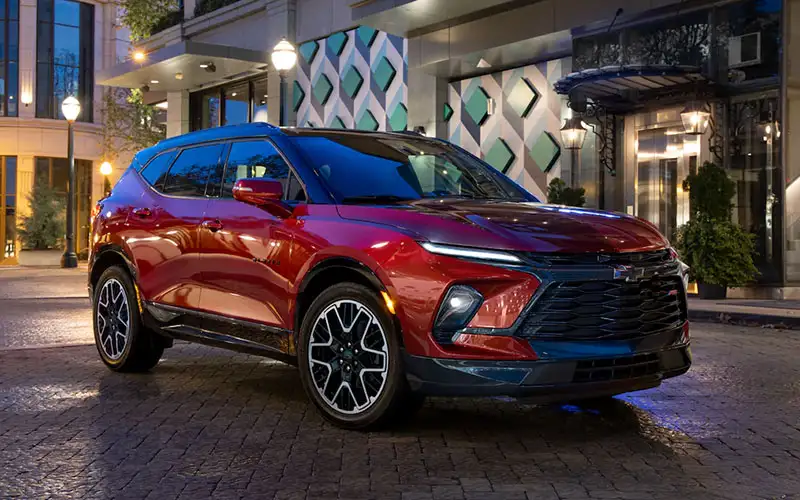If you usually live in your city and commute to work, the grocery store, and so on, an electric vehicle (EV) is ideal for your lifestyle. However, while electric vehicles are inexpensive to operate, they can be tremendously expensive to purchase or finance.
This unfortunate constraint of EVs may be true for brand-new cars, but secondhand alternatives can be shockingly economical in comparison. Electric cars in mass production have been available for 11 years. With almost a decade of EV production, there is a plethora of used electric vehicles out there.
With gas prices going higher this is the perfect time to get a great deal on a used EV. This article discusses the five most affordable used electric vehicles as well as some nitty-gritty of used EV buying.
Is a Used Electric Vehicle Worth it?
Buying a used electric vehicle has some serious benefits. Let’s look at some reasons why using electric vehicles make sense.
Used EVs are a lot cheaper
Electric vehicles are some of the finest bargains in the used market. Since older models depreciate at an extremely fast pace, used EVs are incredibly cheap. For example, if a new 2015 Nissan Leaf was priced at $30,000, it should sell for roughly $9,000 in good condition.
Furthermore, much like a new electric car, a used electric car is pretty cheap to run. Additionally, used EVs are also eligible for the majority of low-emission exemptions and subsidies.
Seriously, the batteries outlast the lifespan of the vehicle
The batteries from older Nissan Leafs are being utilized as backup electrical grids in the UK. They are interconnected together in facilities to store electricity when demand is strong or the power goes off.
EVs require practically no maintenance.
With fewer moving components, you’ll save some of the major expenses connected with ageing gas cars, such as timing belt replacement or new exhaust.
Is a used EV right for you?
You need to know certain things about a used EV before you make a decision.
Over time, the batteries in all EVs lose their capacity to retain a full charge. This can be a significant problem with older and shorter-range EVs that have repeatedly been pushed near to their capabilities. This is why you should consider a used EV if you will use it mostly to commute in the city.
Here is the list of five used electric vehicles that are amongst the cheapest in the market. However, inexpensive does not equate to inferior quality.
1. 2016 Nissan Leaf
Overview
The Nissan LEAF was among the first mass-market all-electric automobiles. When launched in 2011, the Leaf was a pioneer in the EV driving range.
The 2016 Nissan Leaf sports a 107-horsepower electric motor that provides adequate city acceleration but falls short on the interstate. The Leaf features a comfortable ride over uneven roads and calm handling around curves. The basic model can travel 84 miles on a single charge, while higher trims can travel 107 miles.
The Leaf, like other cars in its class, receives high safety ratings. The Leaf includes several standard amenities, including a GPS, push-button start, Bluetooth, and a USB port.
Overall, the 2016 Nissan Leaf boasts a roomy cabin, composed handling, and a great driving range. In addition, Nissan Leafs are very well-built and long-lasting thanks to Japanese engineering.
Used Price: $4k-7k
EPA-estimated range: 73 miles
Positives
- Great used pricing
- Easy to drive
- Balanced ride and handling
Negatives
- Styling is a bit awkward
- Unimpressive highway performance
- Inferior interior materials
2. 2014 Chevrolet Spark EV
Overview
The Chevrolet Spark is the brand’s smallest and most affordable electric car. The Spark EV injects much-needed fun into your commutes thanks to its powerful electric motor and 1-speed direct-drive gearbox. It produces 105 kW (140 horsepower) and 400 lb-ft of torque. It accelerates from 0 to 60 mph in just over seven seconds.
The Chevy Spark EV is not only quick but also balanced and responsive when it comes to handling. Furthermore, the smart design of the lithium-ion battery pack has allowed the Spark EV to maintain all of the standard car’s passenger and storage capacity.
Used Price: $12k-$18k
EPA-Estimated Range: 82 Miles
Positives
- Very economical for an EV
- Easy to manoeuvre and park
- Fun to drive
- Spacious cabin
Negatives
- Tiny battery
- Suitable just for commuting
3. 2013 Fiat 500e
Overview
The Fiat 500e is the company’s sole all-electric model and is an improved version of its gasoline counterpart. It has more pep, is smoother, as well as quieter. A 24.0-kWh battery pack powers the 111-hp electric motor placed under its compact hood.
The 500e is a pleasant city vehicle, with its small size, snappy handling, and an EPA-estimated range of 84 miles. Originally accessible primarily through California dealers, the secondhand market has made the experience available to everyone.
Furthermore, if aesthetics and style are essential to you, the Fiat 500e is one of the most quirky-looking automobiles on this list. It has a fashionable European flair to it, as well as a reasonably strong build.
Used Price: $7-$13k
EPA-estimated range: 87 Miles
Positives
- Athletic acceleration
- Great safety ratings
- Good predicted reliability
Negatives
- Competitors get better driving ranges
- Mediocre ride
- The cabin feels underwhelming compared to rivals
4. 2014 BMW i3
Overview
If you are looking for a premium used commuter car, the 2014 i3 is a fine choice. Its quirky, futuristic design is supported by a high-tech carbon fibre platform and battery-powered electric propulsion.
The i3’s compact size allows it to easily navigate crowded city traffic, and it leaves nothing but slack jaws in its wake. The electric motor churns out 170 horsepower which is channelled to the rear wheels. It has an estimated driving range of 81 miles courtesy of its 22-kWh lithium-ion battery. Some versions include a range extender that extends the overall range to 150 miles.
As with any other BMW, the cabin is upscale and boasts high-quality materials. The i3 is nimble to drive as well, with quick electric acceleration; it blasts away from traffic lights considerably faster than you might expect. Plus, the superior grip around corners allows you to drive confidently.
Used Price: $14k-$18k
EPA-estimated range: 81 Miles
Positives
- Impressive interior
- Attention-grabbing
- carbon-fibre structure and Rear-wheel-drive
- Fun to drive
- Spacious cabin
Negatives
- Limited range
- A bit pricey
5. 2017 Chevrolet Bolt
Overview
The Bolt EV is a brand-new model for 2017. It should not be confused with the similarly titled Chevrolet Volt, which is a plug-in hybrid.
The Chevrolet Bolt EV is so advanced that it effectively makes all other inexpensive electric vehicles look pointless. Its remarkable EPA-certified driving range of 238 miles makes it suitable for daily use. It is the first mainstream vehicle to significantly reduce “range anxiety.”
When compared to other affordable EVs, the 200-hp Bolt EV is a genuine scorcher on the drag strip. The Bolt is incredibly quick and responsive, with a precise chassis and lots of power.
At the same time, the Bolt EV is a useful hatchback with a spacious rear seat and plenty of baggage capacity. It may not look as snazzy as a Tesla, but it is probably a greater breakthrough in automotive technology—at a fraction of the cost. This electric Chevy is also a technical powerhouse. It includes a plethora of modern features, including optional driver assistance technologies.
Altogether, the Bolt is a sensible EV option. It is reasonably priced and combines space and comfort with an astonishing range. This is a great illustration of the benefits electric cars may offer when they are made to improve people’s lives rather than just be flashy.
Used Price: $17k-$22k
EPA-estimated range: 238 miles
Positives
- Incredible range
- Extremely fun to drive
- Loads of passenger volume
- Numerous tech features
Negatives
- Slightly expensive
- Some cheap interior materials
Things to keep in mind before buying a used Electric Vehicle
Purchasing an old electric vehicle might be overwhelming, especially if you’ve never owned one before. Electric cars need a different way of thinking than internal combustion vehicles.
Here’s a look at some essential things to consider specifically when purchasing a used electric vehicle.
Check the battery life
Being the most crucial component, it makes sense to make sure that it is in good condition. The battery in an electric automobile degrades over time, regardless of how much it is used. A car dealership’s service staff may provide you with a complete battery health report.
Alternatively, electric vehicles will show the health of the battery at a glance, either in the instrument cluster or on the central display screen. When you compare this to the initial rating, you’ll indicate what’s remaining.
Know if the Battery Warranty is Left
Yes, we’re still discussing batteries, however, there is some good news this time. Battery packs receive greater extended warranty coverage than the rest of the car from all major automakers.
Most battery warranties last eight years or 100,000 miles after purchase, whichever comes first. As a consequence, many secondhand electric vehicles will still be covered by warranties. Not all warranties, however, are transferable to succeeding owners. As a result, obtain precise information as to whether the battery is protected by any warranty.
Consider Your Access to EV Chargers
When purchasing a used electric vehicle, you should research where you can locate EV chargers along your normal and unusual driving routes.
Here’s everything you need to know about electric vehicle chargers.
Level 1: This level relates to three-prong domestic outlets, such as those used by your computer or desk light. This charging method takes the most amount of time.
Level 2: Level 2 chargers operate at 240 volts and necessitate external equipment that plugs into a socket, such as an electric clothes dryer.
Level 3: This is the quickest charging option, often known as a DC Fast Charger. However, it is only available at public charging stations, which are often fee-based.
Check for Government Incentives
While the majority of electric car tax credits apply to new vehicles, some also apply to used electric cars. You should look into this on government or other sources.
Go for a test drive
As with any sort of vehicle, give any used electric car you’re thinking about a thorough test drive. If at all feasible, get it examined by a reputable technician.
Final Thoughts
Fitting an EV into your life requires a significant amount of preparation and knowledge. However, the reward – savings and emissions-free driving—is worth the effort. Remember that choosing the proper electric car is about more than simply maximum range; it’s actually about choosing the one with sufficient range for your needs.




